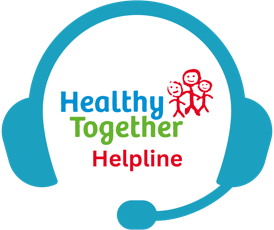This article gives you information about how to prepare for birth. It also gives you information about perineal tears and how the chance of this happening can be reduced.
Scroll through the sections below and click on the title for more information:
What types of perineal tears are there?
- 1st and 2nd degree tears – involve muscle/skin that might need stitches
- 3rd and 4th degree tears – tears go into the muscle that control the anus and will require stitches. These are also called ‘Obstetric Anal Sphincter Injuries (OASI)’

Am I at risk of a 3rd or 4th degree tear?
- This is your first vaginal birth
- If instruments (forceps/ventouse) are used to help you give birth
- You have had a previous OASI
- You are of South Asian ethnicity
- Your baby is born quickly
- Your baby’s birth weight is more than 4kg
How can I reduce my risk of having a severe tear?
1. Perineal massage – Use a natural oil like coconut oil, Vitamin E or olive oil. Make sure you are not sensitive to the oil. Take this oil and massage the perineum and vaginal opening. This is up to 4 or 5cms deep with your index finger or thumbs. Make sure your hands are clean and nails are short. Use circular or U-shaped movements firmly enough to cause a slightly uncomfortable stretch feeling. We suggest that this is done daily from 35weeks of pregnancy. Do the massage for 2 to 3 minutes and try to repeat it 2 or 3 times.

(This video was not produced by Health for Under 5s and may contain adverts)
2. A warm compress – Your midwife can gently place a warm compress (pad or swab) heated with warm tap water against your perineum. This can be done during the pushing stage of labour as the baby’s head stretches your perineum.
3. Unassisted vaginal birth – you might want to think about giving birth in a relaxing environment that is comfortable for you. But try to be active during labour.
4. Choose a birth position that is comfortable for you – listen to your midwife or doctor because they will advise a slow and guided birth of your baby’s head. You can do the following positions to give birth. It can reduce your risk of a severe tear (you are able to lie on your side if you have an epidural)

During birth
- With your consent, your midwife or doctor will use their hands to support your perineum and baby’s head and shoulders during birth. This is to encourage a slow guided birth. This is called manual perineal protection or a ‘hands on birth’. We cannot do this if you are birthing your baby in the water or on a birthing stool.
- You might need a cut through the vagina and perineum (episiotomy) to make more space for baby to come out. Your midwife or doctor will ask for your consent if this is recommended.
- After your birth, your midwife or doctor will ask for your consent to check your vagina, perineum and anus to see if there are any tears which need stitches.
Most women and birthing people who have a severe tear (OASI) recover well from the tear. It can take some time for this to happen. Sometimes long term pain and a difficulty or inability to fully control the bladder, poo (bowels) or the passing of wind can occur. This could lead to:
- Feelings of depression, low mood, isolation
- Anxiety about leaving the house and not being able to quickly access a toilet
- Difficulty bonding with your baby
- Worries about leakage while exercising
- Worries about having sex or giving birth again
If you experience any of the above after birth, contact your doctor or midwife as soon as possible to access specialist care.





